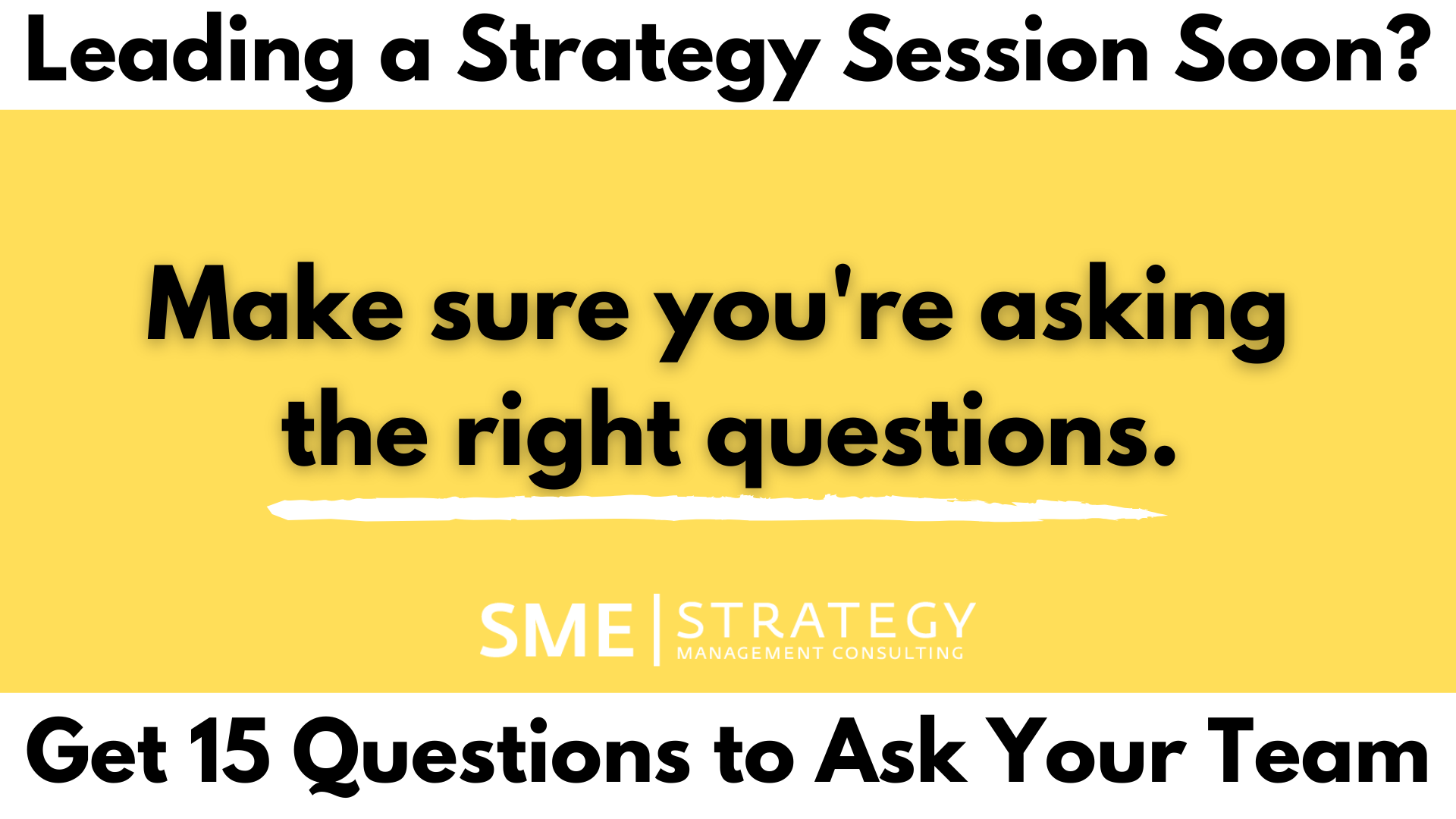SME Strategy is a strategy consulting firm that specializes in helping organizations align their teams and operations around a shared vision, mission, values, goals, and action plans. Our strategic planning services offer guidance on how a strategic planning facilitator can provide support in constructing an effective strategic plan that ensures your strategy is communicated and implemented across your entire organization.
Change seems to happen faster than we can imagine. Sometimes it feels like we're caught off guard by these changes and are reacting instead of planning ahead for what's coming next.
The good news is that you can identify and prepare for changes by using tools like trend analysis, risk analysis, and scenario planning.
As a part of the strategic planning process, these tools are valuable for all types of organizations, whether government, non-profit, or for-profit, to assess future scenarios for their industry and organization.
Why should you care about trend analysis?
The people you work with should all be working towards the same strategic goals. What happens if the path you need to take towards achieving these goals begins to change because of outside forces?
(Picture a subway line that closed unexpectedly or the event you had planned to go to sold out of tickets. What would you do then?)

Obviously, these are small concerns, but what happens if your main supplier goes out of business or a law changes your ability to do business? You would want to have a plan in place to keep your team and your goals on track. Right?
The faster things change, the more important tools like scenario planning are to keep your team on track and on the same page.
Here are three activities to help things run smoothly in your organization:
1. Trend Analysis looks at trends in the outside world that affect how you do things now and in the future.
2. Risk analysis identifies risks and uncertainties that affect your organization and what you can do in response.
3) Scenario planning creates four different versions of the future so you can hedge your bets on what the future holds.
We can help you align your team around a clear vision, mission, values, goals and action plans,
so you can lead your organization more effectively and get better results.
1) Trend Analysis: PESTLE
The simplest way to plan for an uncertain future is by using a PESTLE analysis.
A PESTLE analysis will help you identify trends in your organization and analyze the impact on those trends on your organization.
(Note: if you are able to make the time- do a SWOT analysis before doing the PESTLE analysis. It does not affect this process, but it will add value to it.)
Outlining Trends by using a PESTLE analysis.
- Political
- Economical
- Social
- Technology
- Legal
- Environmental.
> Watch below: Scenario Planning for a Post-Pandemic Future w/Lance Mortlock from EY
How to do it:
Address all six categories until you are satisfied with the results. Discuss the impact each area may have on the future of your organization.
Depending on the size and scope of your organization a deeper trend analysis may be required to create a well thought out business strategy.
- Political
How will changes in government and policy affect your world now and in the future?
- Economical
What are the economies that affect your organizations? Your customers, your business, your people, other countries where your business operates?
- Social
What trends with people and society affect the way your organization operates? Personal choices and preferences, Group norms, expectations and realities about society.
- Technology
What trends change the way you, your competitors, or your customers use and adapt to technology?
- Legal
How are changes or potential changes in laws and policies going to affect your ability to fulfill your mission and meet specific goals?
- Environmental.
What is happening with the environment now and in the future that may affect your organization and the people working in it.
You can use these trends to capitalize on opportunities as well as mitigate risks.
2) Risk analysis
As we alluded to earlier, the world is an uncertain place. Being able to remove uncertainty from your plan and strategy makes it easier to stay on track.
The more time your team spends being reactive to unexpected challenges, the less time they have to spend on executing the plan and moving forward. Risk analysis helps identify these various uncertainties and creates potential plans of action.
Your team will be more prepared because they have spent time "thinking" of these scenarios. As such, they will be more prepared to act if the possibility turns into reality.
How to do it:
Brainstorm with your team possible uncertainties that might occur and affect your organization.
Next- outline the impact of that uncertainty occurring.
Ex:
- Risk: Our main supplier goes out of business.
- Impact: We don't have any inputs to create our product.
- Risk: Our currency changes by 10% (up or down)
- Impact: Our sales and revenue forecasts are off. (Impacts on
payroll ?)
Etc...
Once you have outlined some of the roadblocks that may lie ahead you can add activities and tasks that will mitigate those risks.
-Find another supplier
-Change the formulation of our product
-Launch new sales strategy
-Keep more cash in the bank.
By the end of this activity, you should have 3 columns
- Risks
- Impact
- Mitigation.
Include these in your strategic plan and track them at regular intervals.
(You can also use a heat map to track your risks on a graph.)
The last tool you can use to track uncertainties involves combining the two techniques from above in a set point in the future.
This technique is called scenario planning and bridges the gap between hoping and planning.
Need help with your strategic planning process? A facilitator can help:
3) Scenario planning.
Scenario planning is a way to anticipate the future by predicting four different outcomes that might be possible.
Instead of relying on only one version of the future, your team can create plans that are flexible depending on the direction of the trend. This way you don't rely on only one prediction of what the future holds. This long range planning tool lets your team "hedge your bets" as the future becomes more certain.
How to use it:
First, we're going to identify some uncertainties that exist in your business.
If you did the exercises above, then you have trends for the next 12-24 months.
If you didn't, identify trends in your organization/business that might occur in the next 12-24 months.
Next, Do the same exercise, but this time get your team to identify trends and uncertainties for 10 years from now.
(Depending on your organization you may want a longer time frame)
Once your team has spent some time looking at trends 10 years from today do the same exercise again within a 5 year strategic planning time line.
Next, pick the two most critical uncertainties to your organization and put them on a matrix so each uncertainty has a high and low impact that go on each end of the axis. Once you combine each uncertainty, you have created four different scenarios for the future. Finally, discuss the implications and impacts of each quadrant something that is memorable for your team.
For a visual summary of the scenario planning process:





